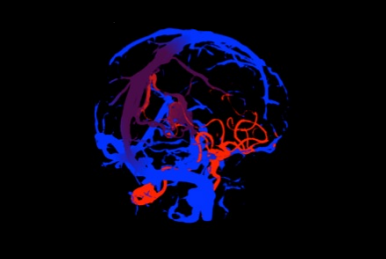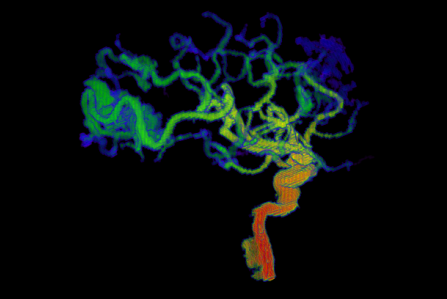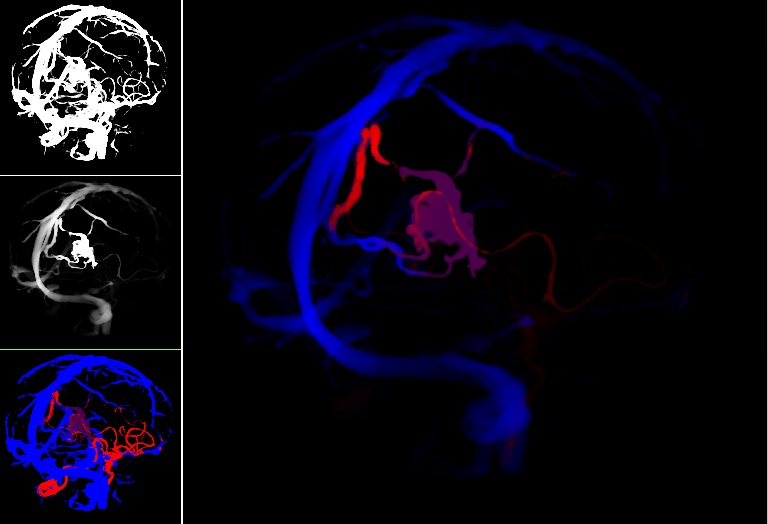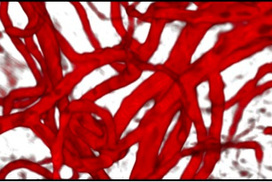We explored a number of different volume rendering methods for AR visualization of vessel topology and blood flow.
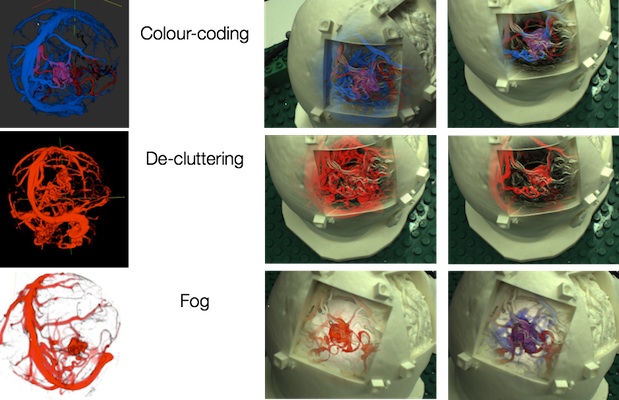
Publications
- M. Kersten-Oertel, S. Drouin, S. J. S. Chen, D. L. Collins. ‘ “Volume Visualization for Neurovascular Augmented Reality Surgery”. Augmented Reality Environments for Medical Imaging and Computer-Assisted Interventions. Lecture Notes in Computer Science Volume 8090, pp 211–220, 2013.
- M. Kersten-Oertel, S.J.S Chen, S. Drouin, D. Sinclair, D. L. Collins. “Augmented Reality Visualization for Guidance in Neurovascular Surgery.” Stud Health Technol Inform 173:225–9. Proceedings of Medicine Meets Virtual Reality (MMVR), New Port, CA, Feb 9–11, 2012.
- S. Drouin, M. Kersten-Oertel, S. J. S. Chen, D. L. Collins. “A Realistic Test and Development Environmentfor Mixed Reality in Neurosurgery”. Augmented Environments for Computer Assisted Interventions’ (Proceedings of MICCAI AE-CAI Workshop 2011) Lecture Notes in Computer Science, Volume 7264:13–23, 2012.

